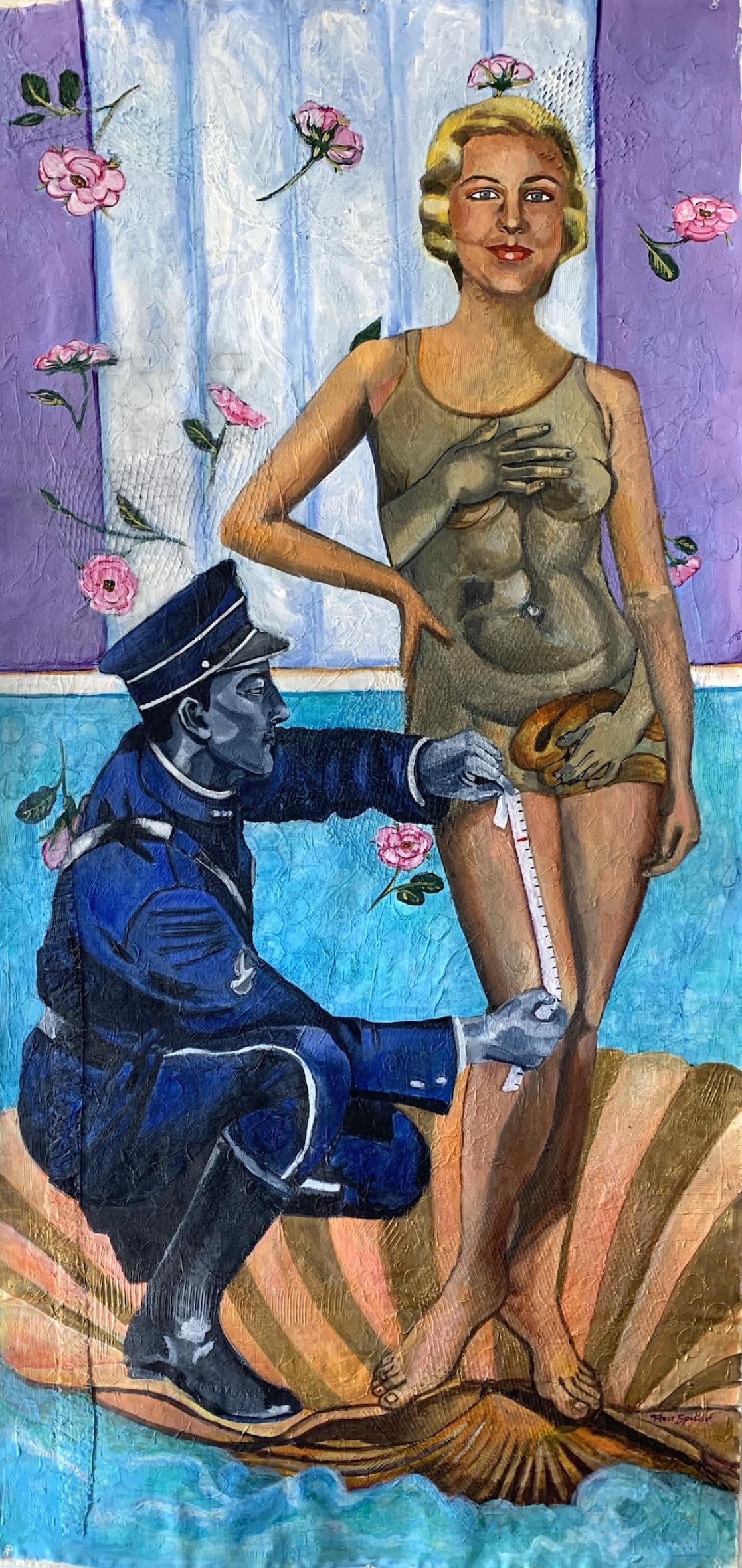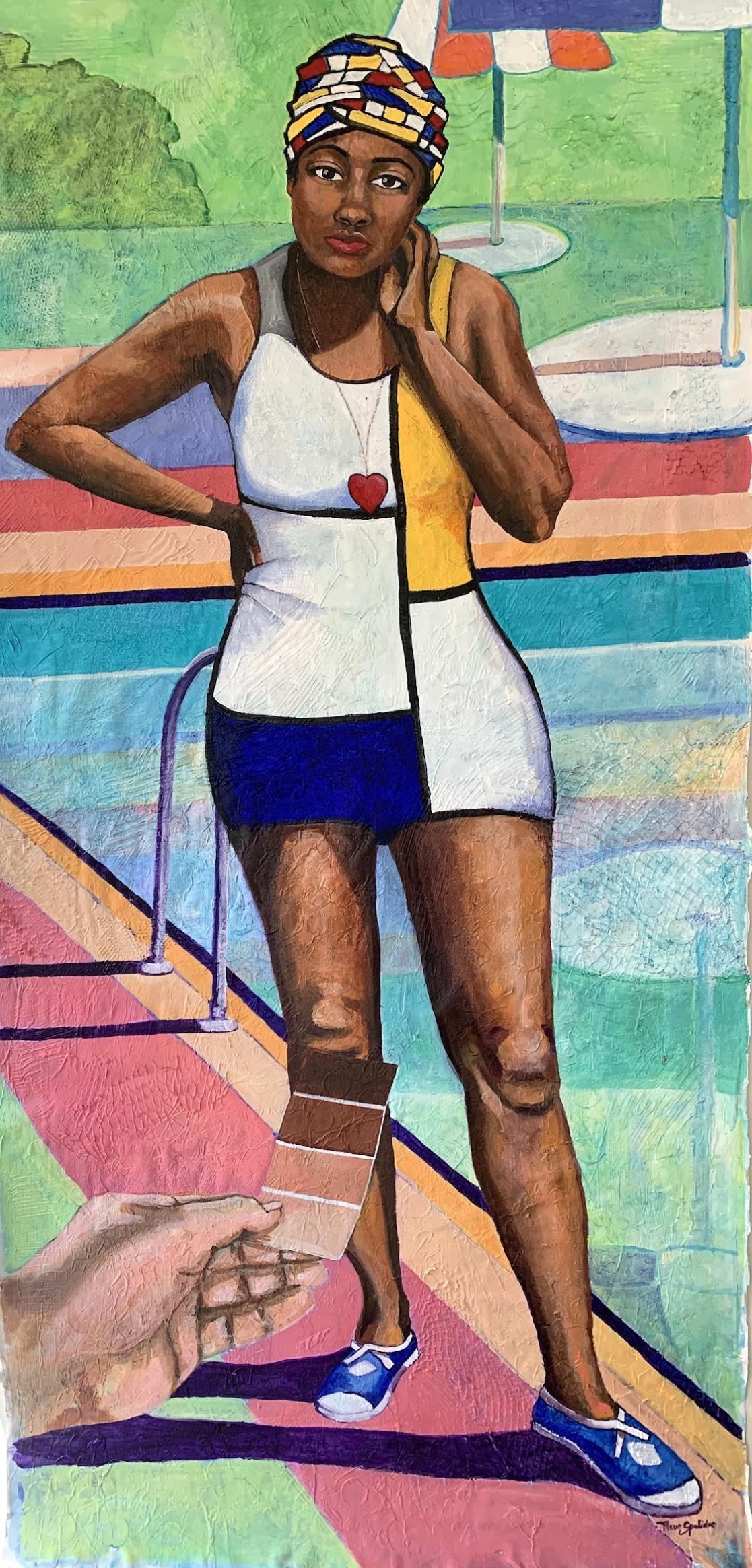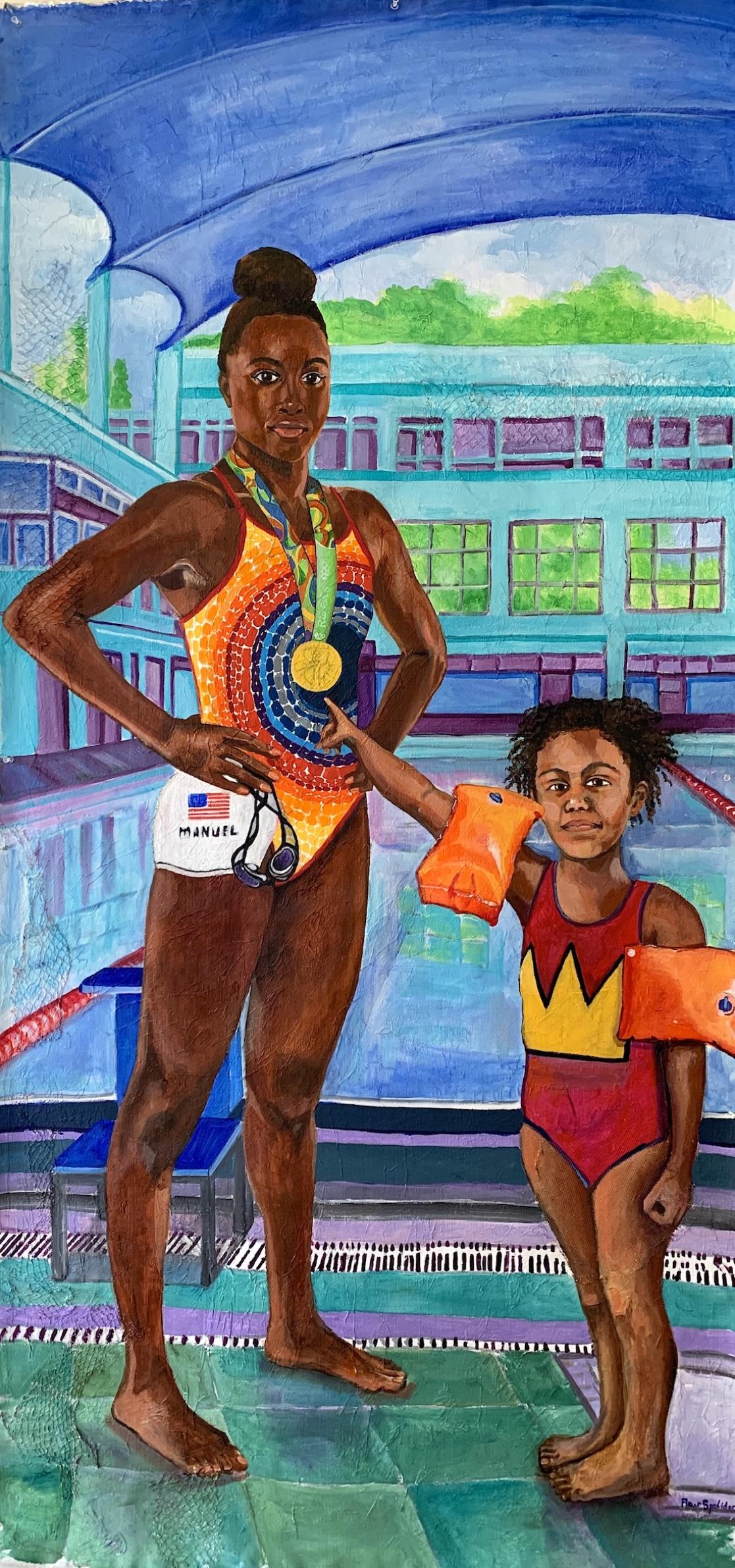Art Speaks Louder Series - "The Swimsuits" Exhibition by Fleur Spolidor
This year the CSW is focusing on the theme of “innovation and technological change, and education in the digital age for achieving gender equality and the empowerment of all women and girls”. There are further hurdles for women and girls, who are usually less likely to benefit from digital revolutions and access to technology than men and boys, known as the gender digital divide. The European Union will work to ensure the achievement for gender equality and is approaching CSW67 with the highest level of ambition.
The Swimsuits series, a pictorial reflection on women’s rights by Fleur Spolidor
The Swimsuits series by French artist Fleur Spolidor focuses on Women’s Rights and the surreal situations that women face in society. For the creation of these paintings, the artist was inspired by news articles and historical facts as well as personal stories and anecdotes related to her by acquaintances. The exhibition consists of seven artworks. However, the artist is currently working on five more pieces to complete a series of twelve paintings. The number twelve stands for the twelve months of the year, reminding us that the fight for Women’s Rights should never stop. The artist paints them in acrylic on a collage of recycled materials, not only to upcycle, but also to create a rough textured surface, thus contrasting with the idea of classical painting being constructed as windows of a smooth, perfect world. The structure of the backgrounds shows through the painted images, marking the female bodies with ruggedness and imperfection in the manner of passing life that is imprinted in the flesh. By painting them wearing only bathing suits the artist aims to question the narrative surrounding women’s body. She proposes an unambiguous look at the contemporary woman, imperfect, real and combative.
All seven paintings are large (72"x36") life-size panels. Fleur Spolidor (www.artefleur.com) paints strong, life size women whose distress cannot be ignored any longer. The Swimsuits series is located at the east hallway on the 31st floor of the EU Delegation to the UN.

Fleur Spolidor
Bathing suit censor
This painting is inspired by Botticelli's birth of Venus, a painting considered by some to be the source that sets the standard for western beauty, asking the question: is Venus the end of diversity of women's size and shape? Spolidor superimposed the Venus painting in the bathing suit to the image of Officer Buchanan measuring Betty Fringle’s bathing suit in Palm Beach (newspaper photo c. 1925). In the painting, Betty is hiding her nudity with a bathing suit showing Venus’ naked body. Women’s bodies are always under scrutiny, victims of societal rules, comments and critics.
Bathing suit: Sandro Botticelli, Birth of Venus, 1486

Fleur Spolidor
Social History of American Swimming pools
This particular piece was inspired by a segment by Dulcé Sloan for the Daily Show “Dulsayin’ - What Happened to America’s Public Pools?” in which she talks about the problem faced by African Americans to access public pools during the summer and how racism is the main reason for the closure of so many recreational facilities. On researching the subject further, Spolidor found the book of Jeff Wiltse. “Contested Waters: a social history of swimming pools in America” in which he explains, as gender integration occurred, how municipal pools became "sexually charged" spaces where "intimate and prolonged contact" between swimmers of different races, genders, and social classes provoked violent conflicts.
Bathing suit: Piet Mondrian, Composition with Yellow and Blue, 1932

Fleur Spolidor
Between gold and survival skills
The social history of swimming pools spans across the 20th century with as result that in 2021 a staggering 64% of African American kids cannot swim at all, while for caucasian kids, the figure is still alarming at 40%. Simone Manuel is one of the few African American olympic swimmers. She is an example for younger generations.
Bathing suits: Alma Thomas, The Eclipse, 1970
Jean Michel Basquiat, Pez Dispenser, 1984 (crown details)

Fleur Spolidor
Pink tax
The pink tax refers to the tendency for products marketed specifically toward women to be more expensive than those marketed toward men. According to UN news: “For every dollar men earn, women earn 77 cents. Women are also under-represented in decision-making roles. Women carry out at least 2.5 times more unpaid work than men. At the current rate, it will take 257 years to close the global gender pay gap.”
Bathing suit: Andy Warhol, Marilyn Monroe 31 – Pink, 1967

Fleur Spolidor
Body Dysmorphia
Self esteem is a question of balance, an healthy introspection, to help us evolve through life. But obsessive scrutiny, looking at oneself on social media or constantly comparing oneself to others can eventually provoke anxiety and throw people off balance, leading some to do extreme plastic surgery, damaging their body or risking their life.
Bathing suit: Frida Kahlo, The Broken Column, 1944

Fleur Spolidor
Breastfeeding
Today in the US, breastfeeding is still problematic for multiple reasons: a lack of knowledge of the values of breast milk connected to social norms as bottle feeding is viewed by many as the “normal” way to feed infants. Not enough social support, the fear of embarrassing situations and the need to return to work are also part of the problem women are facing when having to decide if they can/want to breastfeed or not.
Bathing suit: Johannes Vermeer The Milkmaid, 1658

Fleur Spolidor
Aging gracefully
According to the US National Institute of Health, some essential factors to aging well are within one's control. How can one reinvent oneself after 50? Why is perimenopause still such a mystery? Does a woman lose her value after menopause? By 2025, more than 1 billion women around the world will be postmenopausal.
Bathing suit: James Abbott McNeill Whistler, Arrangement in Grey and Black No. 1, 1871




